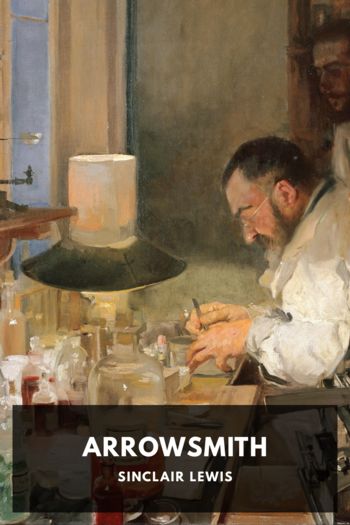Holocaust: The Nazi Persecution and Murder of the Jews, Peter Longerich [essential books to read TXT] 📗

- Author: Peter Longerich
Book online «Holocaust: The Nazi Persecution and Murder of the Jews, Peter Longerich [essential books to read TXT] 📗». Author Peter Longerich
order’. The national government supported this view and in the same month
recommended that regional governments deploy the police to restore order ‘if for
example pickets are set up in front of a shop and grossly offend those attempting
to gain entry by making threats, insulting them or in any other way’. The method
the National Socialists used to organize the boycott of Jewish businesses in April
1933 thus corresponded to a model that had been tried and tested even before their
‘seizure of power’. 90
From the mid-1920s on, the Centralverein received more and more complaints
about discrimination against Jews applying for jobs in large firms. Such discrim-
ination, which the CV mainly attributed to the activities of former army officers
working in the personnel departments of these firms, was justified as an attempt to
avoid friction with völkisch-minded employees. It too grew to the extent of
becoming a boycott. According to the CV, the firms principally affected were
large banks, the domestic departments of large insurance firms, the chemical
industry, heavy industry, mining, shipbuilding, and the firm of Siemens. 91
As had happened in Imperial times, in the Weimar Republic a large number of
hotels, guesthouses, tourist, and spa resorts refused to accommodate Jewish guests
and exclusively targeted a völkisch-minded public. The most famous example of
this form of boycott is the holiday island of Borkum, which was positively proud
of banning Jewish visitors. The number of anti-Semitic restaurants and cafés also
increased during the 1920s. The CV published blacklists and in 1932 eventually
Anti-Semitism in the Weimar Republic
25
established a tourist office to advise Jewish travellers about the current status of
local anti-Semitic activity. 92
The Director of the CV made the following summary at the end of 1925: it was
depressing to note ‘that a form of social anti-Semitism that far exceeds what had
been the case before the war is now a dominant feature of the reactionary political
and social climate; that with many, too many fellow citizens, whilst the atmosphere
fostering aggressive anti-Semitic activity has waned, a “passive” anti-Semitism is
still present, a tendency to avoid all contact with Jews’. 93
The boycott movement that originated with the National Socialists and other
radical völkisch forces was only supported by a minority of the population at large;
it was not a truly popular movement, but the openness with which the boycott was
propagated proved to be decisive, as did the fact that the boycott, although it
was in many instances against current law, was generally tolerated and did not
produce a counter-movement to offer resistance. Those who encouraged others to
boycott Jewish businesses, heads of personnel who refused to employ Jewish
applicants, guesthouse owners who did not accommodate Jews risked no general
social disapproval or fatal economic consequences.
It became clear, therefore, that radical anti-Semitism and its central demand for
the exclusion of Jews from the rights of citizenship was not limited to the agitation
of the NSDAP but gradually took root in the political and social life of the Weimar
Republic. The radical anti-Semitic forces had succeeded in forcing the Republic to
enter into a debate on the ‘Jewish question’.
It was against this backdrop that an informal compromise was worked out in
the early 1930s between the National Socialists and their political partners on the
right. Whilst the National Socialists indicated that they would give up the overly
violent forms of anti-Semitism if they were to take power, their partners in the
leadership of the DNVP, the Stahlhelm, and other right-wing organizations were
obviously more and more willing to accept the old demand that the Jews be legally
driven out of certain areas of public life. This increasing willingness was not
evident from public decrees but it was clearly detectable in the public statements
of leading right-wing intellectuals and it manifested itself in the policies of
organizations discussed above that were prepared to exclude Jews definitively
from their membership for fear of criticism from the National Socialist camp. 94
In 1933 the radical anti-Semites had triumphed in the matter of exclusion after a
struggle that had lasted more than fifty years. With the imposition of their radical
viewpoint towards the ‘Jewish question’ they had won a significant symbolic
victory that in turn emphasized their leading role amongst the political right.
However, it is not the gradual erosion of conservative reservations about taking
on radical anti-Semitic positions that explains how the National Socialists were so
easily able to introduce their anti-Semitic policies immediately upon taking
power. There is an additional important factor: in the last years of the Weimar
Republic there were no significant political or social groupings that might have
26
Historical Background
prevented the success of the radical anti-Semitic movement. The Liberals who had
inscribed the emancipation of the Jews on their banners in the nineteenth century
(even though they were mainly concerned with founding a German nation state in
which non-Christians could also thrive as citizens with equal rights) no longer
existed as a political force by the early 1930s. 95 Anti-Semitism was also rife amongst Catholics. For religious reasons, because of the Catholic view of mankind, Catholicism was in essence incompatible with radical racist anti-Semitism.
However, this did not cause the Catholic Church to stand up to that form of anti-
Semitism; instead it was by no means hostile to a certain weakening of the Jews’
position in society so that in the end both variants, religious and racist, were
mutually supportive. And the workers’ movement, which was relatively clear of
anti-Semitism, saw it principally as a diversion from the realities of the class
struggle and did not take the anti-Semitic demands of the National Socialists
especially seriously. They did not seriously fear their implementation, and in the
view of the Socialists these demands ultimately undermined the interests of
‘capital’ (including the stereotype of the ‘Jewish capitalist’ that was also prevalent
in the workers’ movement). 96 This, then, was the political scenario that faced the National Socialists in 1933 when they began to put their anti-Semitic policies into
practice.
Part I
RACIAL PERSECUTION, 1933–1939
This page intentionally left blank
chapter 1
THE DISPLACEMENT OF THE JEWS FROM
PUBLIC LIFE, 1933–1934
Before the war German Jews were the victims of three waves of Nazi anti-
Semitism, each of which inaugurated a new stage in their persecution. The unrest
of March 1933 was followed by the boycott of 1 April and the first anti-Semitic
laws, which initiated the process of driving Jews out of





Comments (0)